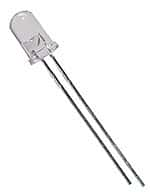Sweden was in the news recently for their extreme recycling capacity. Swedes recycle waste to the extent that they have to import garbage from other countries for use as landfills. Others countries struggling to recycle their garbage may be interested in generating rechargeable batteries from discarded packing materials that do not degrade when used as landfills.
At Purdue University, researchers have found a new way to recycle discarded peanut-shaped packing materials. They are turning these materials into components that can be used for making rechargeable batteries. Additionally, they claim their batteries can outperform those currently in use.
Packing materials have always presented a challenge when they have to be disposed. It is not very cost-effective to recycle them. For one, they are light and their large size makes it expensive to transport them to the recycling center. Additionally, they take up a lot of space in landfills. Vinodkumar Etacheri, Ph.D. explained this in a presentation of the research at the National Meeting & Exposition of the American Chemical Society.
The other reason why packing materials are not suitable is they can be harmful to the environment. Although they may not contain CFCs or ozone depleting gasses, packing materials are usually made from recycled or new polystyrene, which was also used for making Styrofoam. While the exact constituents may vary, packing materials usually contain different types of chemicals.
Among them may be potentially harmful substances such as heavy metals, chlorides and phthalates. These leach into the environment easily when in a landfill. They deteriorate the soil and water quality. Although marketers claim newer material they use for making packing material is more environmentally friendly, the chemicals and detergents used in the starch-based alternatives also contaminate the ecosystem.
A new process developed by the researchers converts the packing material into high-tech nano-particles and carbon micro sheets. These are useful in making anodes for rechargeable batteries.
Lithium ion batteries have lithium ions moving between electrodes as the batteries charge and discharge. When the new anodes replace the conventional graphite ones in commercial lithium ion batteries, the performance gain is dramatic. The anodes made of nano-partcles and carbon micro sheets increase the storage capacity of the lithium ion batteries several folds.
The porous microstructure of the new anodes allows the lithium ions to diffuse in quickly and create more surface area within the micro sheets. The increased surface area offers greater electrochemical interactions. In addition, the disordered crystal structure and the porous nature of the new anodes can store more lithium ions beyond their theoretical limit.
According to the researchers, they use a relatively low temperature for the new process. This is a crucial factor in producing these new materials with their advantageous architecture. While other researchers make micro sheets at temperatures as high as 4,000°F, researchers at Purdue University have kept the temperature of their process at only 1,100°F. Instead of the more layered arrangement of carbon atoms at the higher temperature, the lower temperature generates less-ordered materials. That actually increases the electrical storage capacity by about 15%. The lower temperature process also allows the materials to remain more environmentally friendly.

